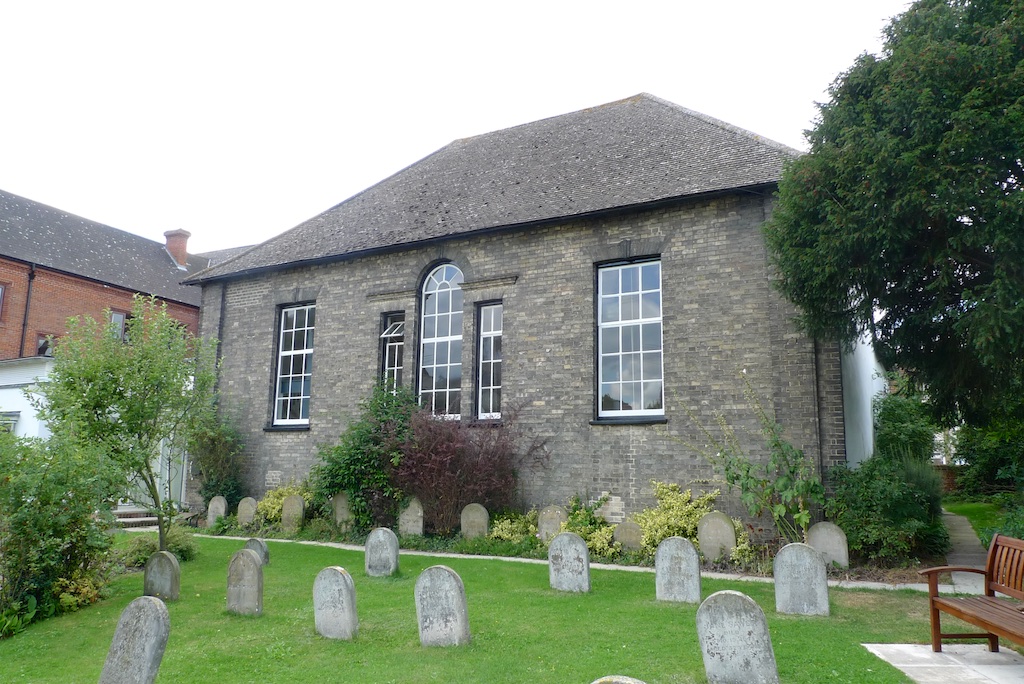Pictures of buildings mentioned in the second edition “Suffolk” volume of “The Buildings of England” series by Sir Nikolaus Pevsner.
It is hard to represent Bury St Edmunds properly on this site. It has the longest entry in the second edition at 23 pages and the third edition (Suffolk West volume) runs to just over 50 pages.The best advice is to go to the town with a Pevsner in hand - the third Edition if you can. Whilst it is essentially Georgian in character there is much to see that is earlier and later. There are good restaurants and good shopping areas both ancient and modern. In the meantime we can but dip in and find a few gems of note.
Pevsner (second edition) deals with the Abbey and its surviving buildings first, then the Cathedral, followed by St Mary and other churches before dealing with public buildings and then the town with two "perambulations". James Bettley's third edition follows a similar plan. However, I'll start with St. Mary's, then the Abbey and then the rest of the buildings in some broad relationship to the book.
I start with St Mary's because within that Church is the monument to Mary Tudor, sister of Henry VIII, married to King Louis XII of France, and after his death (first secretly) to Charles Brandon Duke of Suffolk. She was the Duchess of Suffolk but more widely known as the French Queen. Here are some photographs:
Pevsner (second edition) deals with the Abbey and its surviving buildings first, then the Cathedral, followed by St Mary and other churches before dealing with public buildings and then the town with two "perambulations". James Bettley's third edition follows a similar plan. However, I'll start with St. Mary's, then the Abbey and then the rest of the buildings in some broad relationship to the book.
I start with St Mary's because within that Church is the monument to Mary Tudor, sister of Henry VIII, married to King Louis XII of France, and after his death (first secretly) to Charles Brandon Duke of Suffolk. She was the Duchess of Suffolk but more widely known as the French Queen. Here are some photographs:
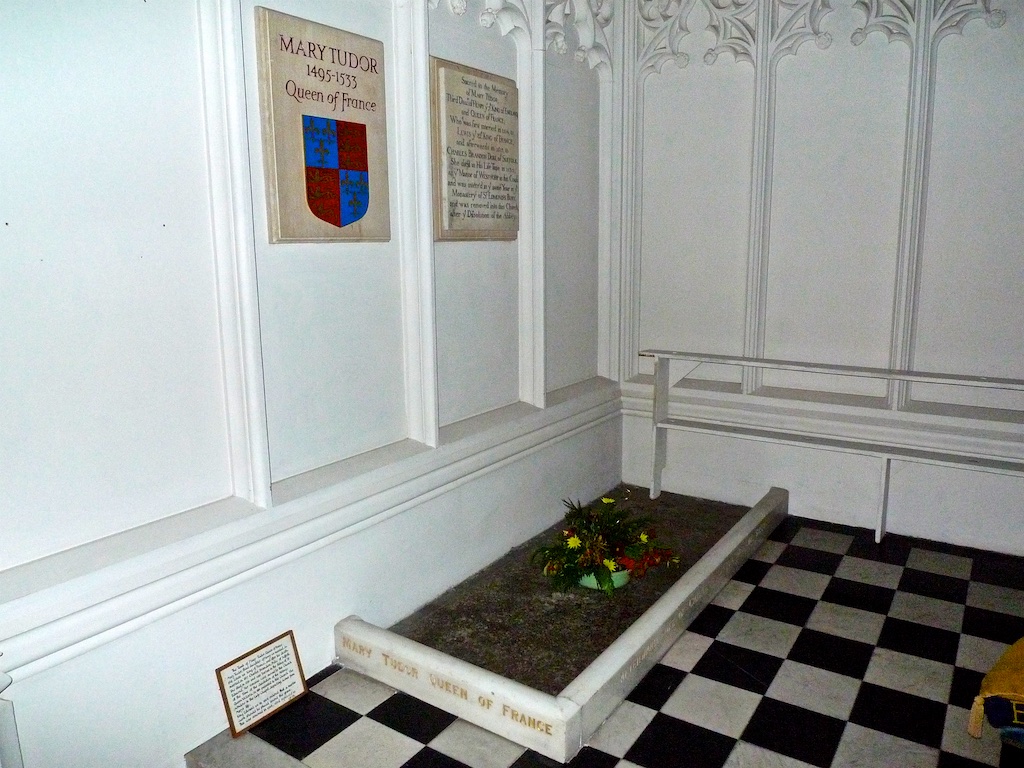
Some explanations:
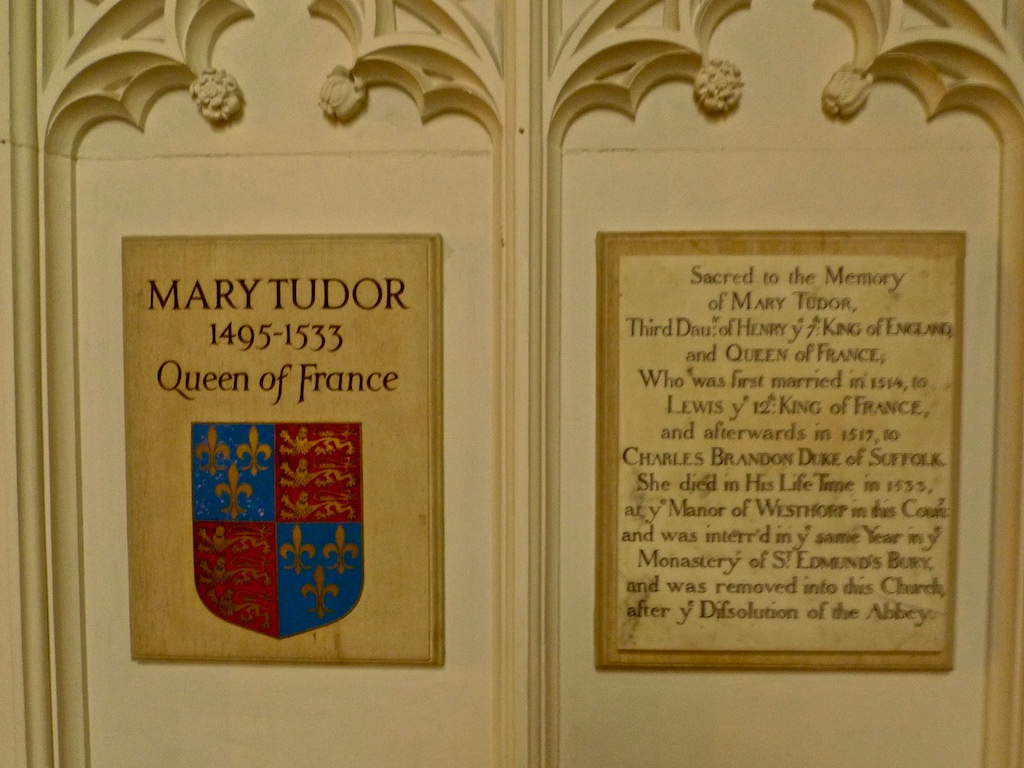
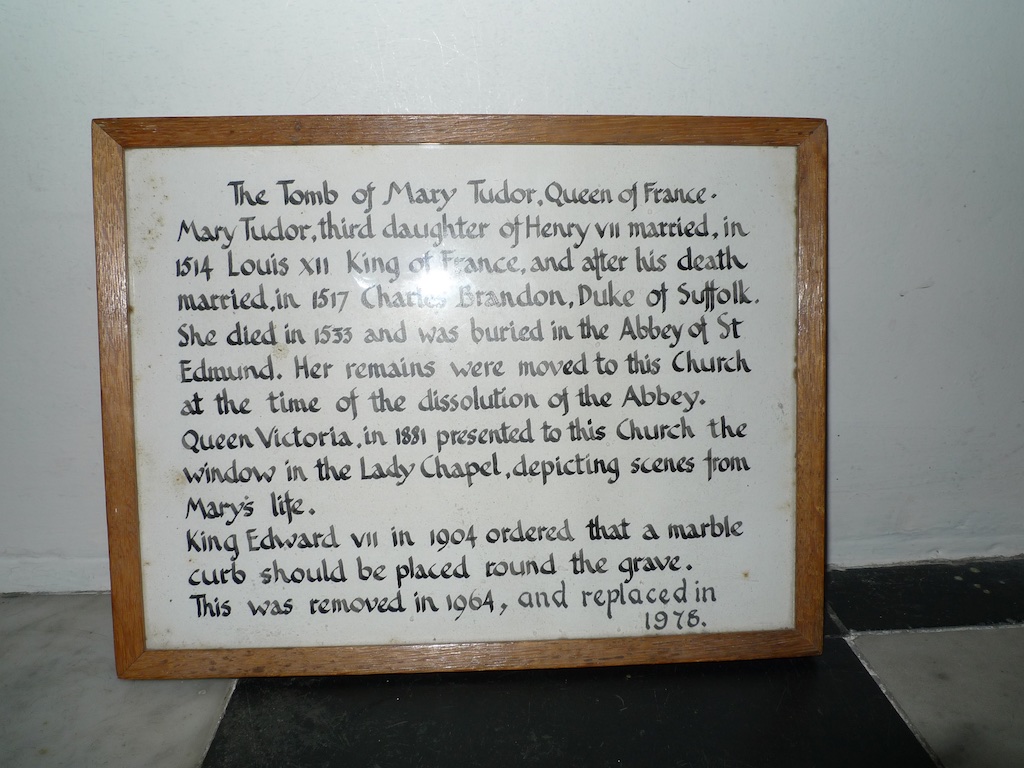
The bottom of the window depicting scenes from Mary's life presented by Queen Victoria:

And the full window;
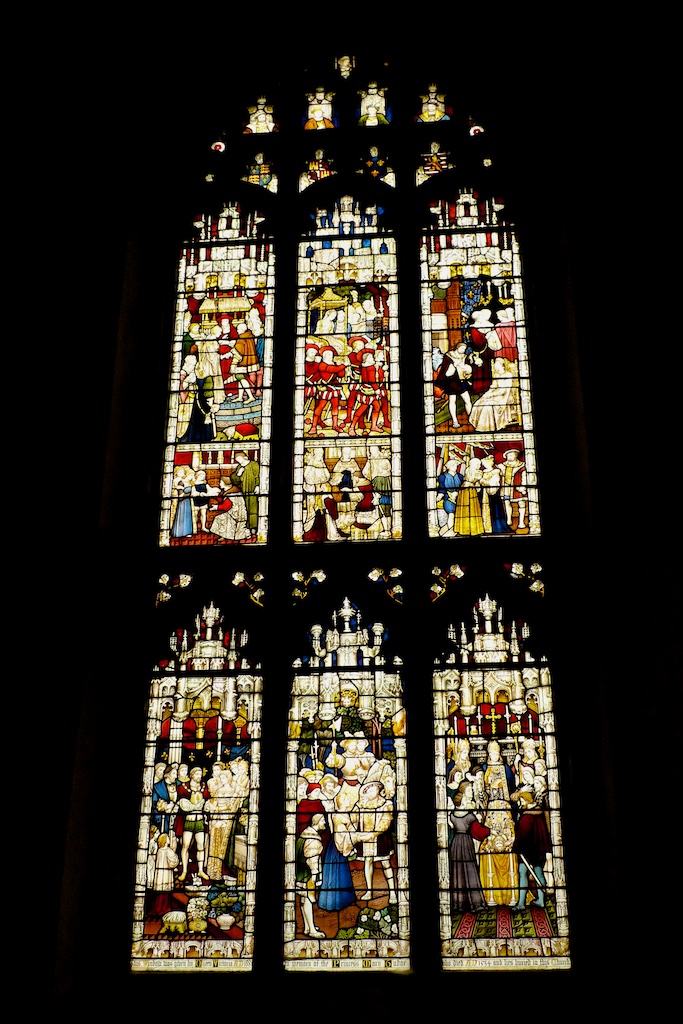
Next we move on to the Abbey. Of it Pevsner starts with "St. Edmundsbury was one of the four or five most powerful and wealthy Benedictine monasteries in England. What remains of it now is two mighty gates into the precinct, and inside it no more than fragments, which tell their tale only to the student". First the two "mighty gates":
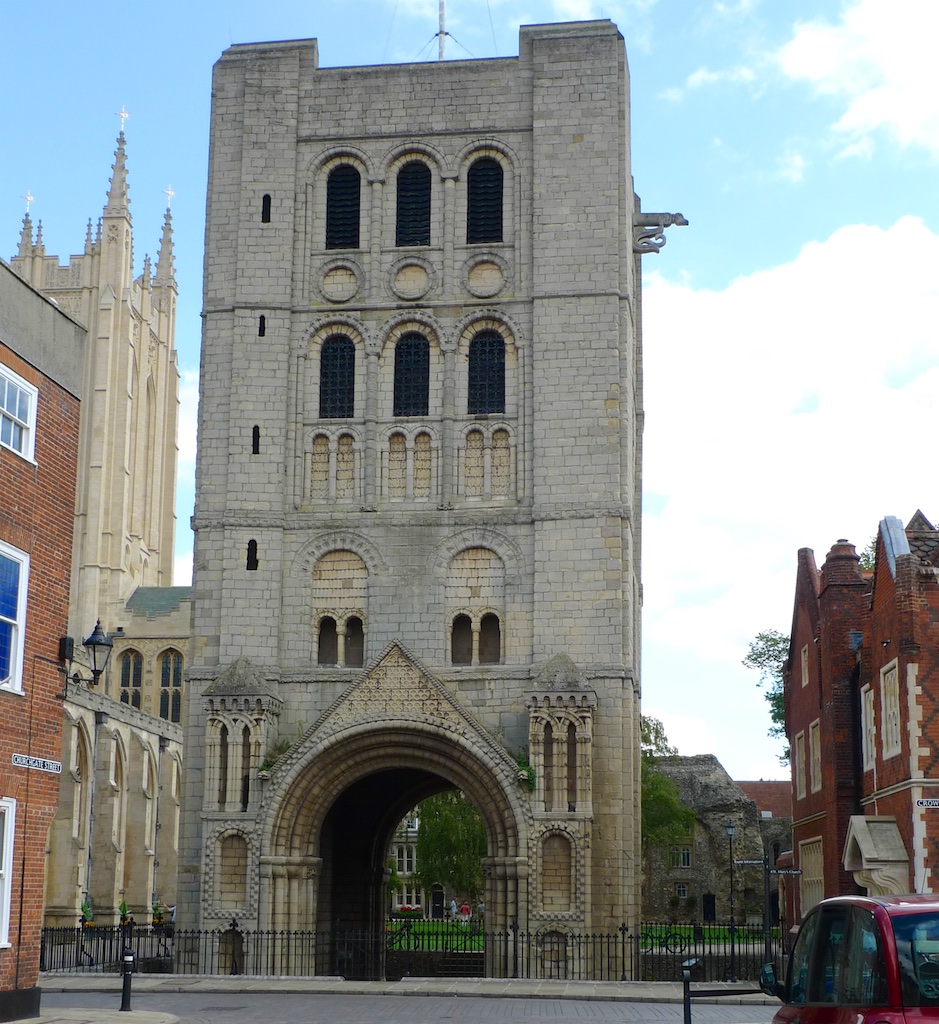
The Norman Gate from the town side.
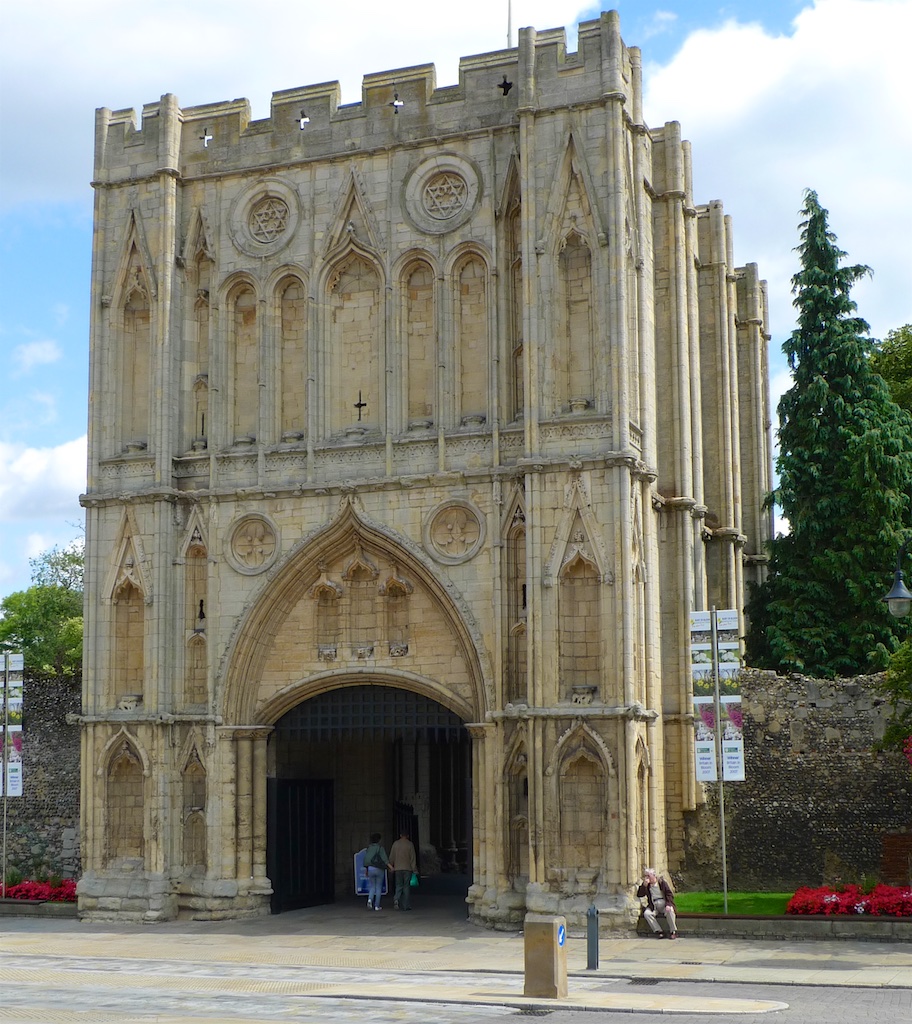
The Great Gate from the town side.
And to see them from their other sides:
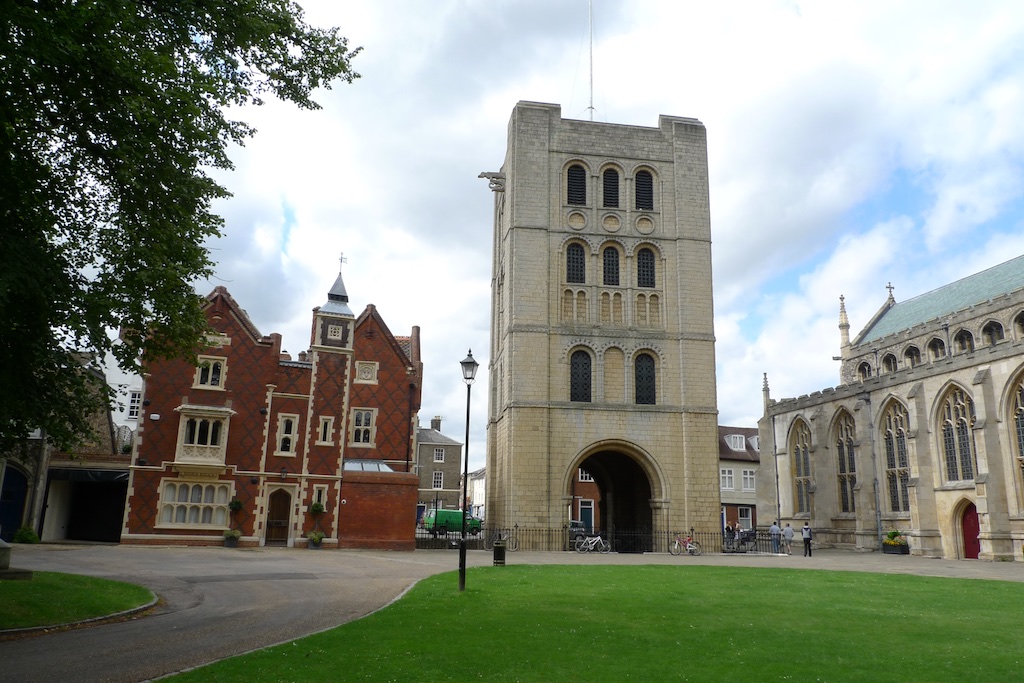
The Norman Gate from the other side.
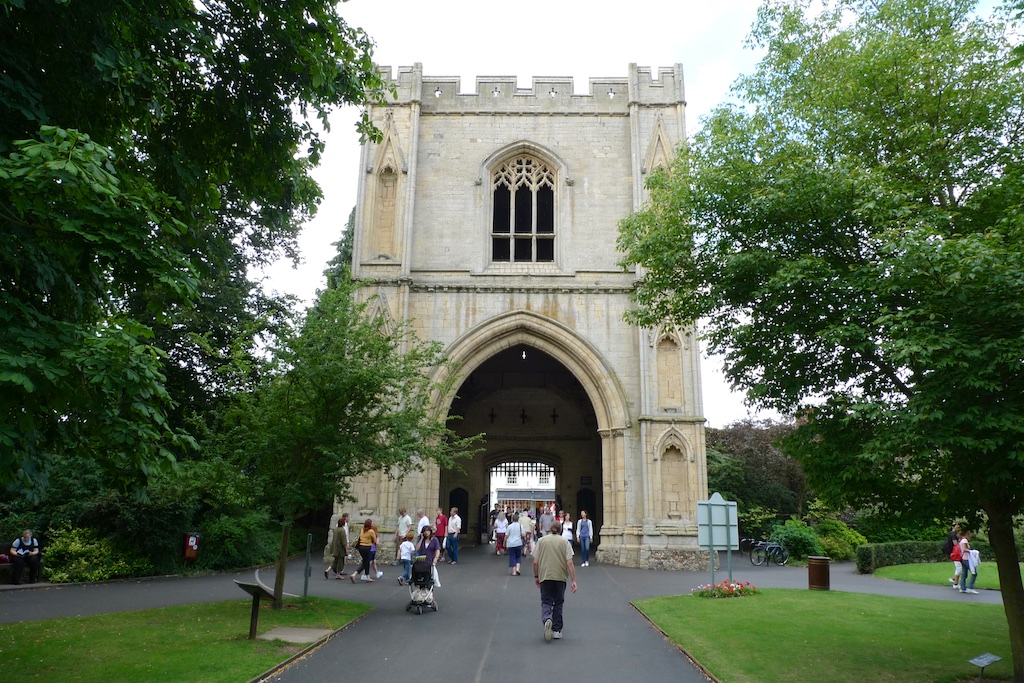
The Great Gate from the precinct side.
There is a viw of inside the Great Gate and then the rear of Abbey House from the precinct:
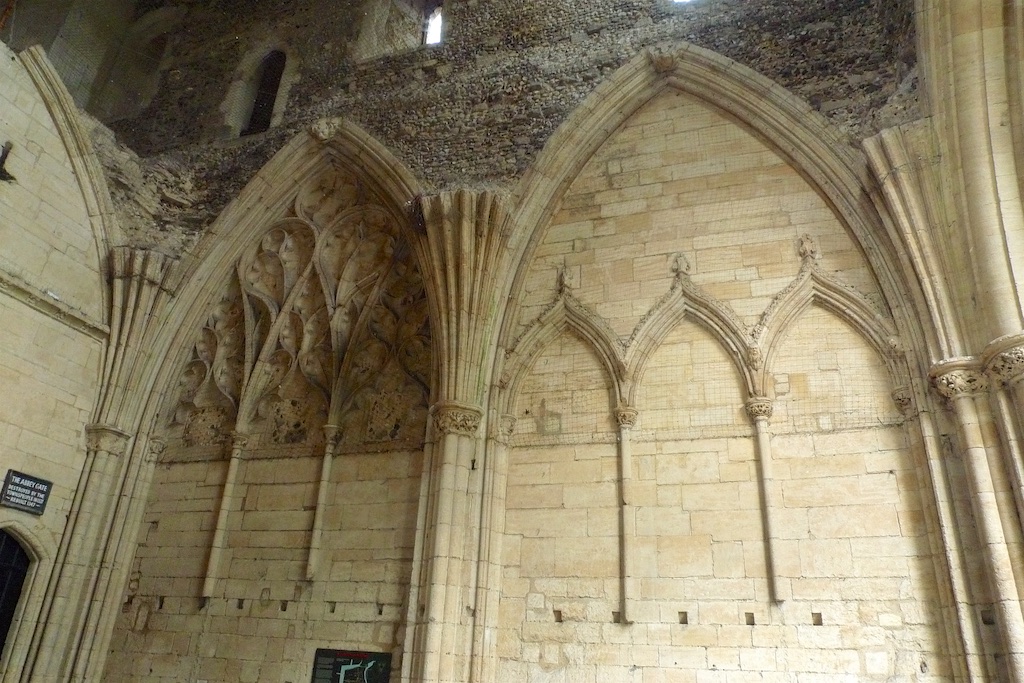
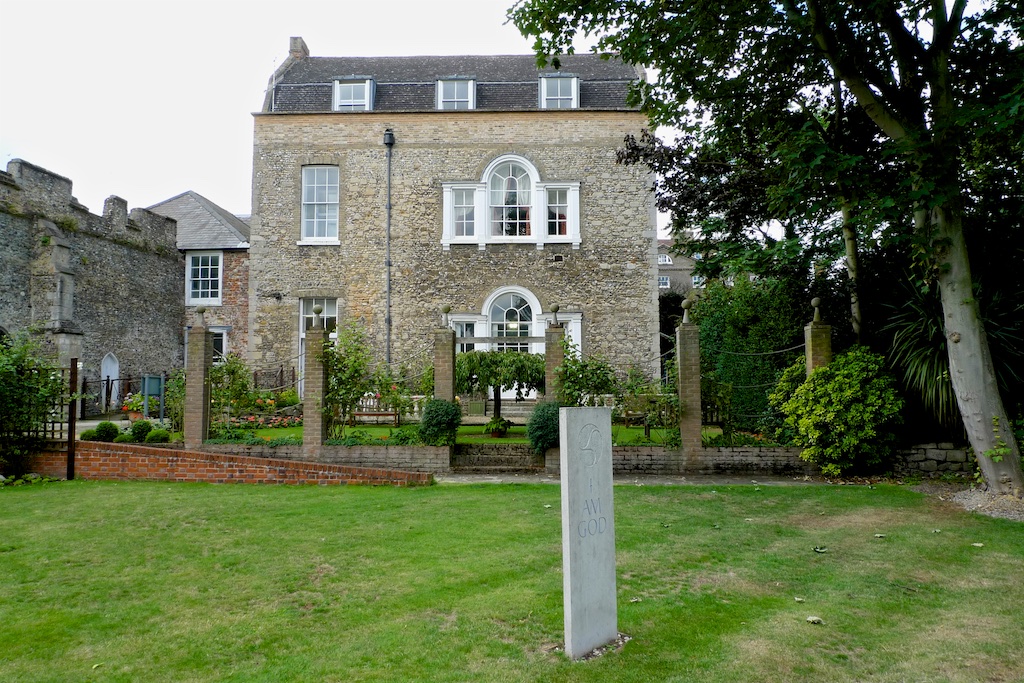
Of Abbey House on Angel Hill, Pevsner says "No 30, seven bays, drably cemented, with an Ionic porch. The back of the house, inside the precinct, is older". After the rear view above, here are two views from Angel Hill:
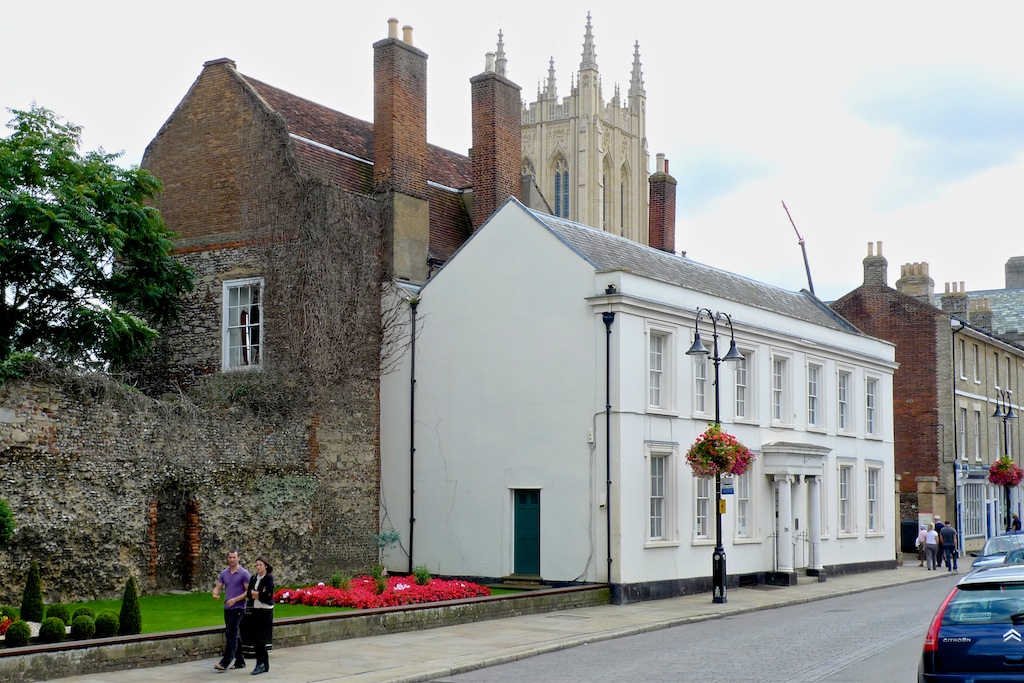
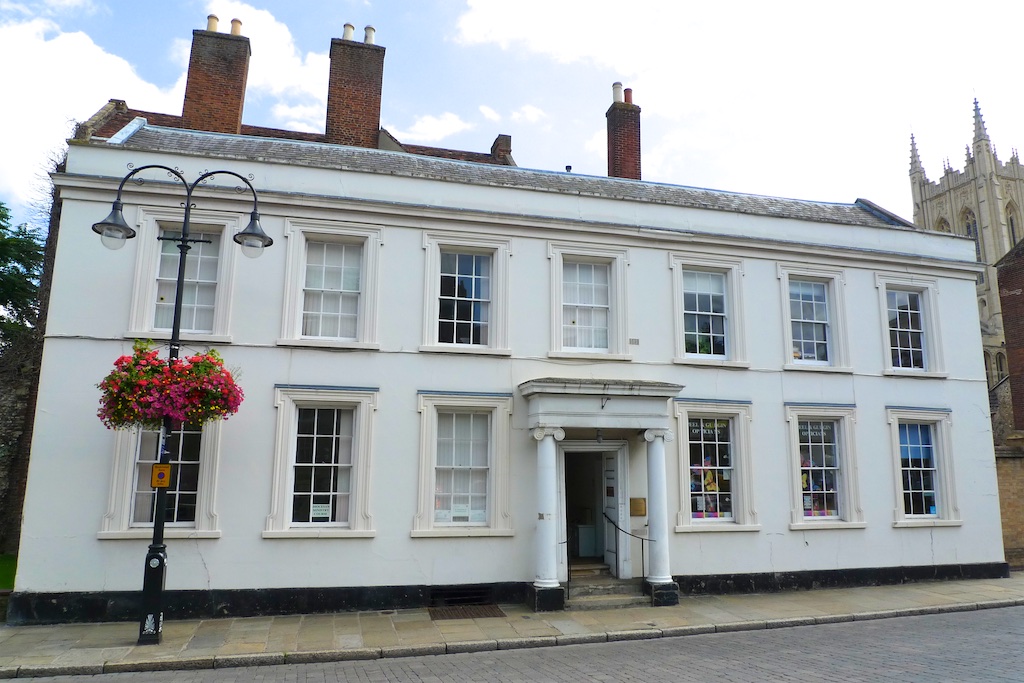
Then around Angel Hill starting with the Athenaeum:
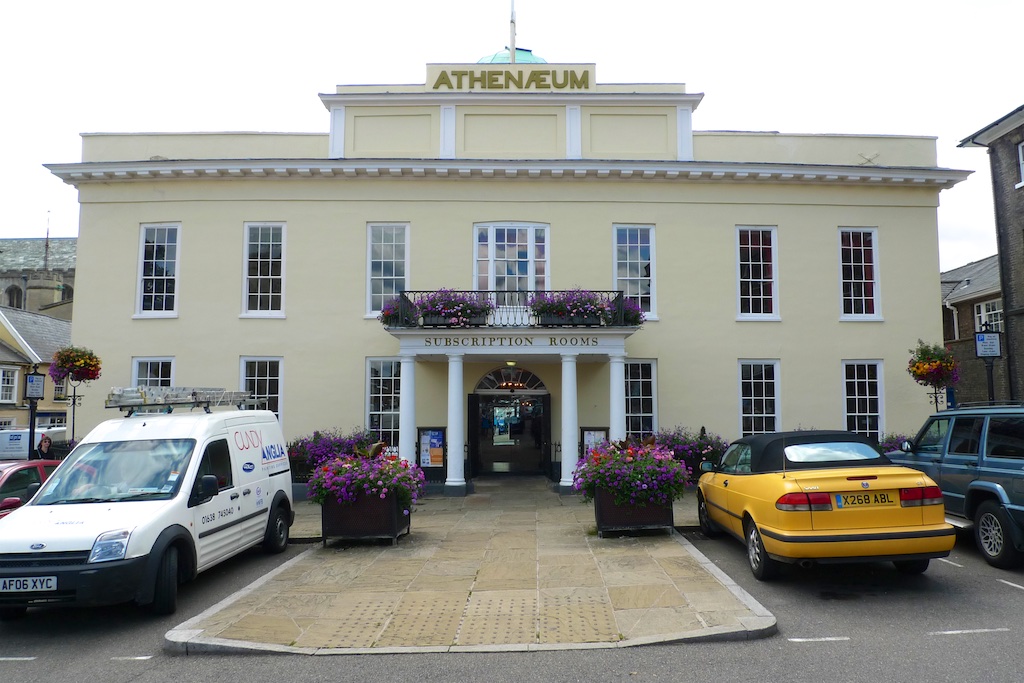
and then:
The NE bend of Angel Hill is marked by a taller white brick house, and the corner is sensitively rounded".
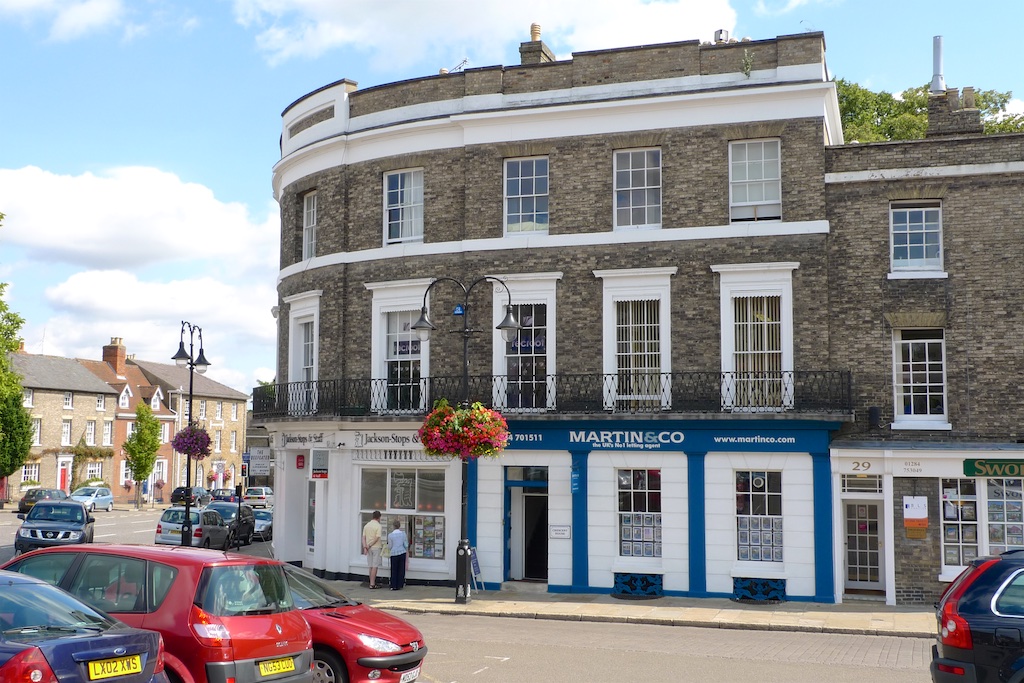
"Across the road the N side of Angel Hill makes a nice group"
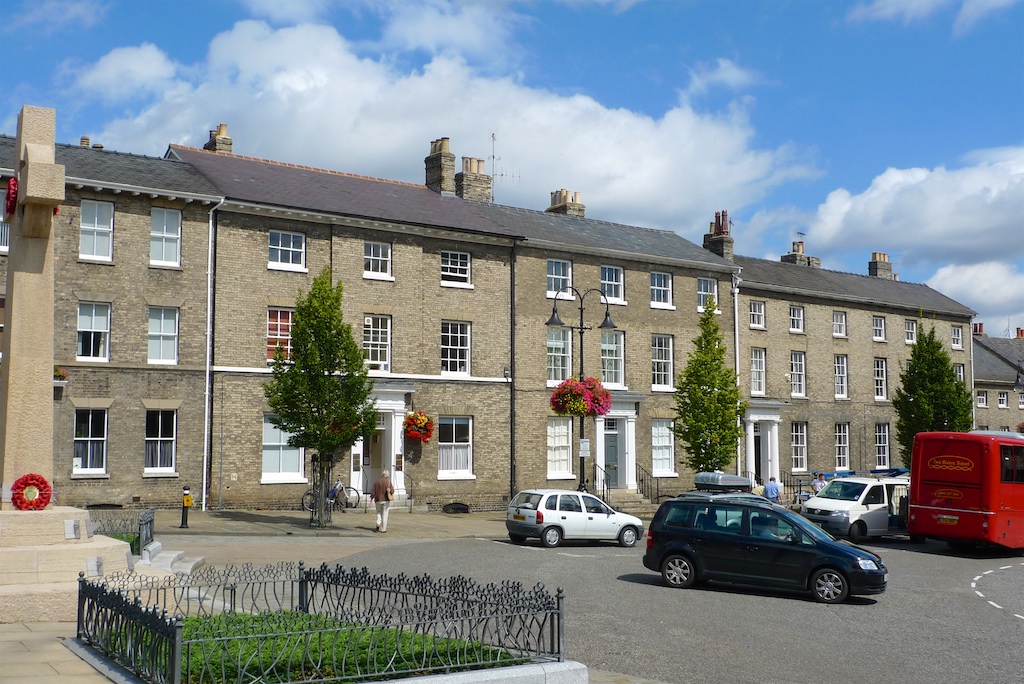
The Angel Hotel:
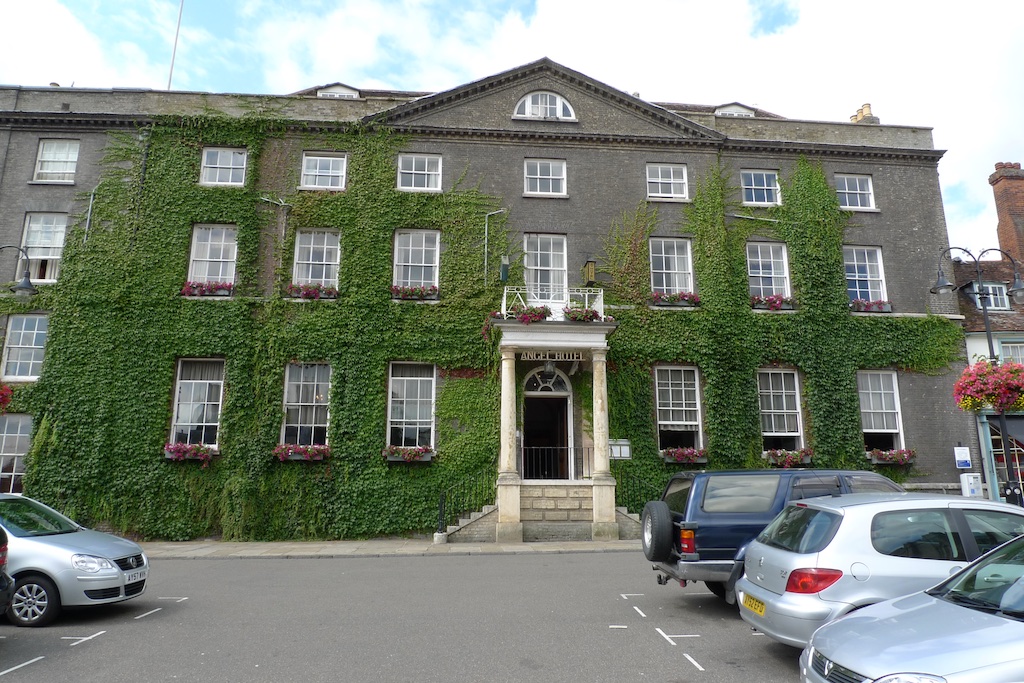
Angel Corner:
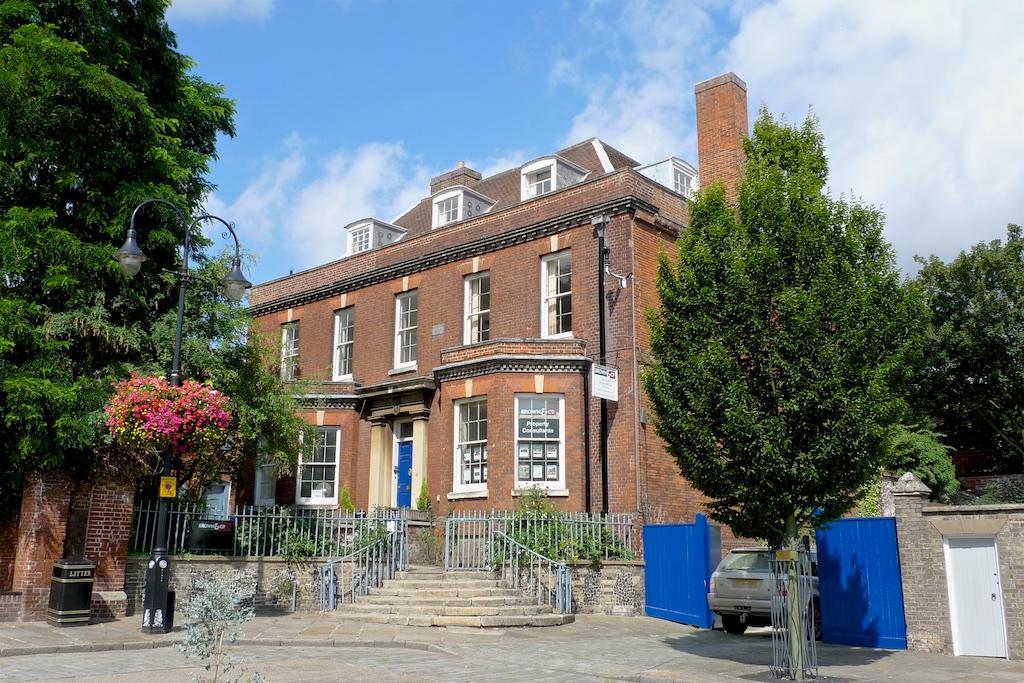
The Council Offices:
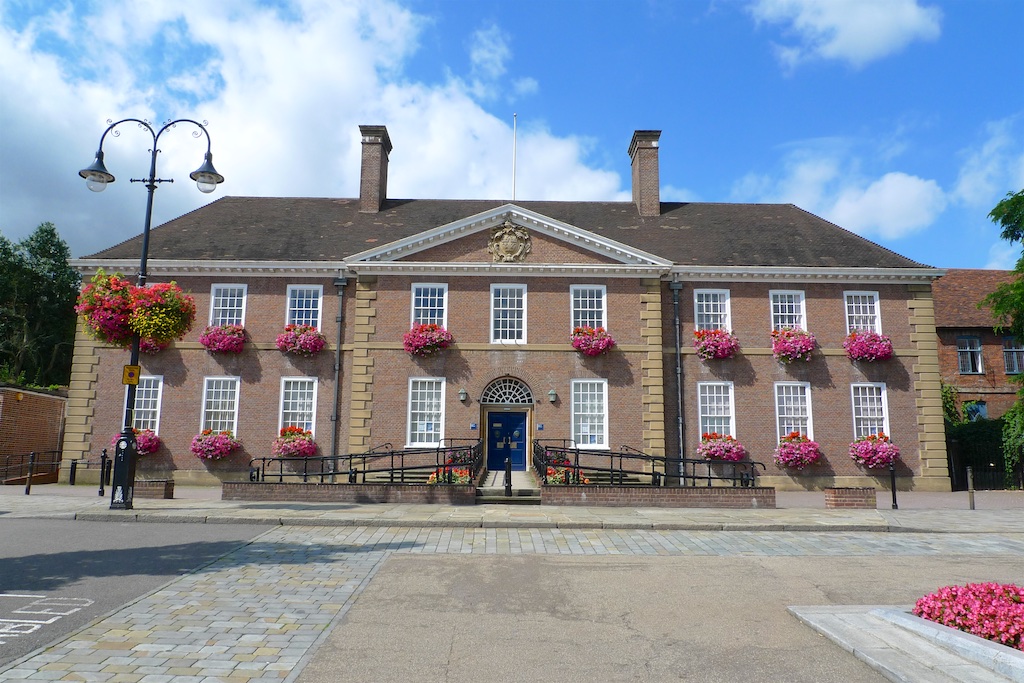
A more general view of Angel Hill:
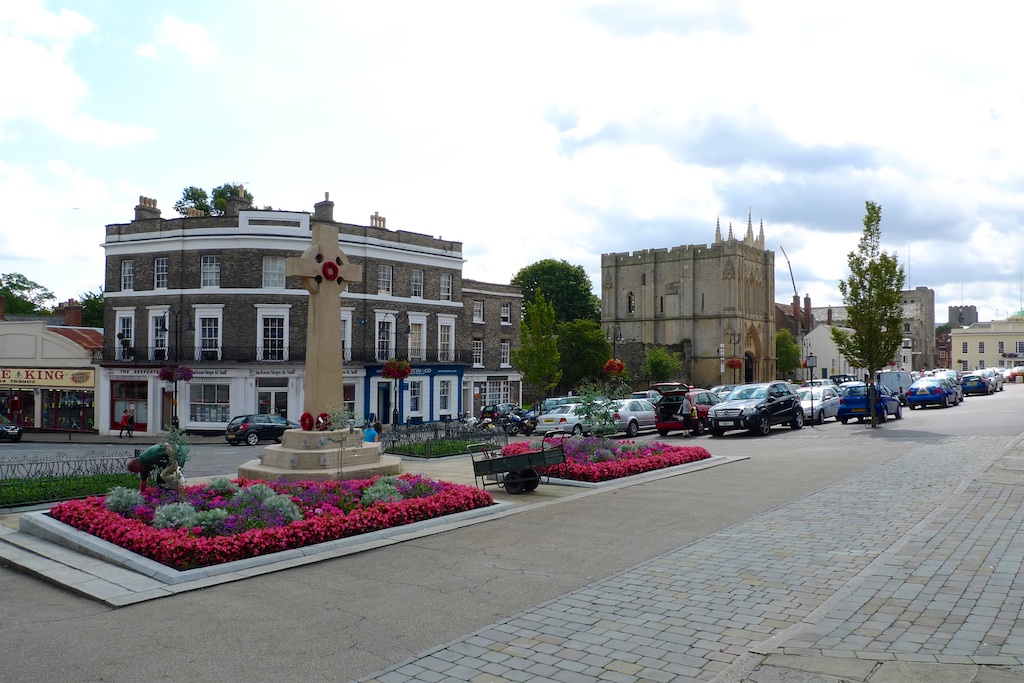
Moving now into the town (most photographs from 2009):
(Former) Leesons. Late Georgian "with unfluted Ionic columns carrying rather ponderous capitals":
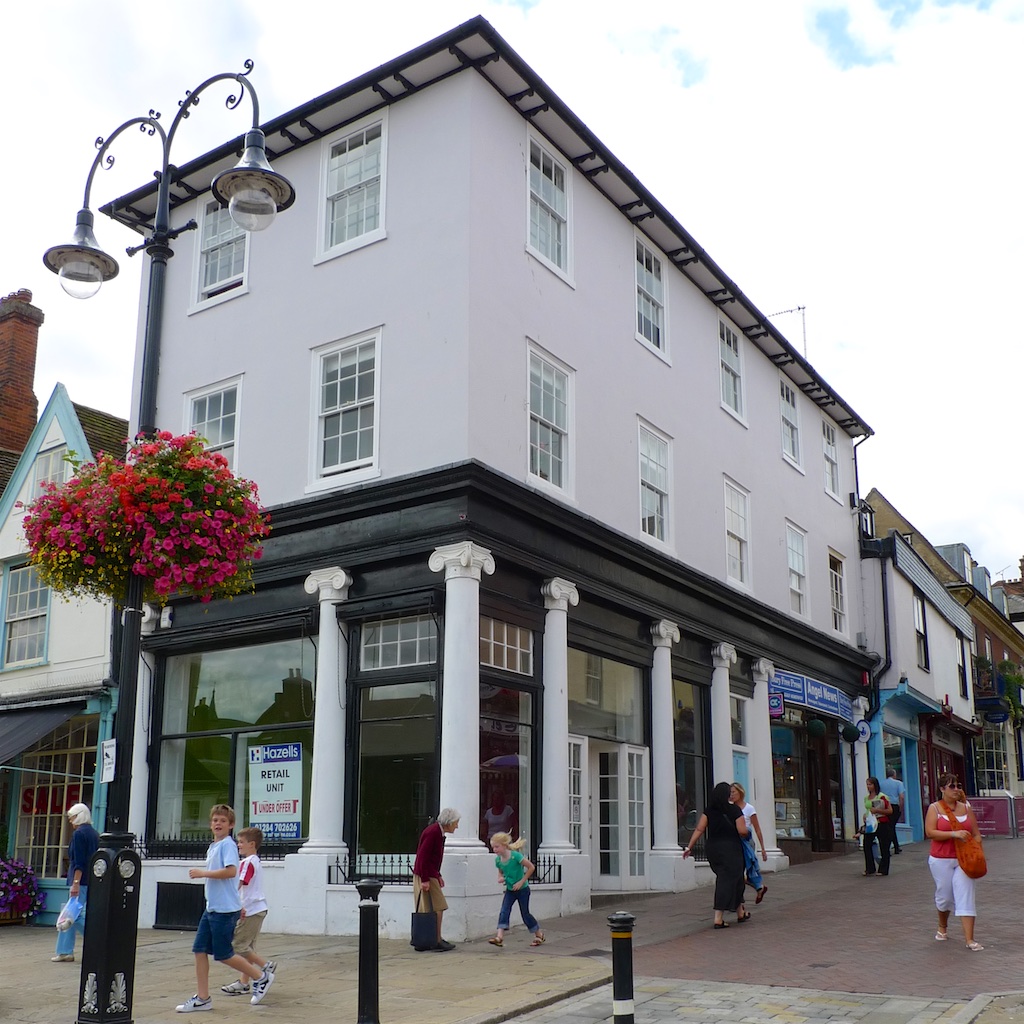
(Former) Ridley's "with small glazing panes. The building in which this shop is in is a substantial red brick house of c1700":
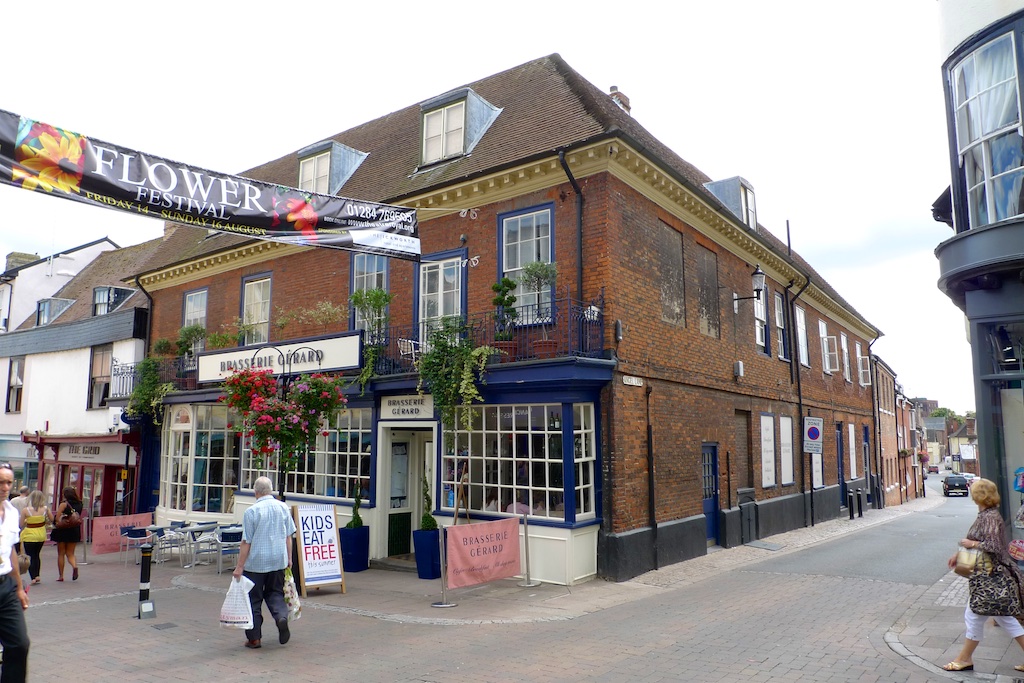
Close to the corner of Lower Baxter st. one of the few timber=framed houses, with upper overhang":
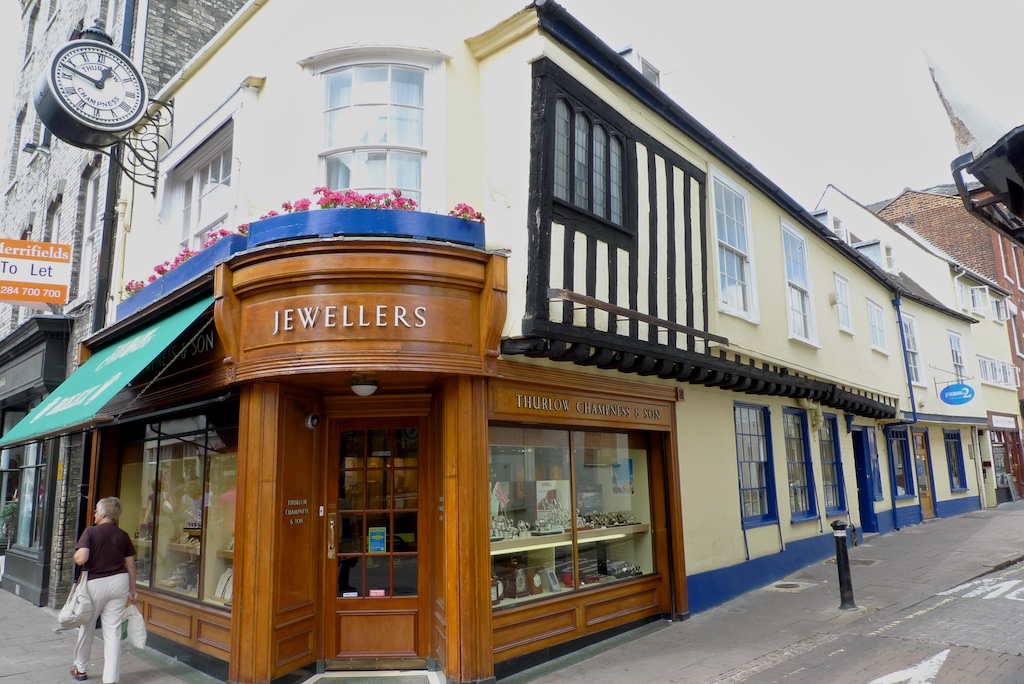
(Former) Alliance Assurance:
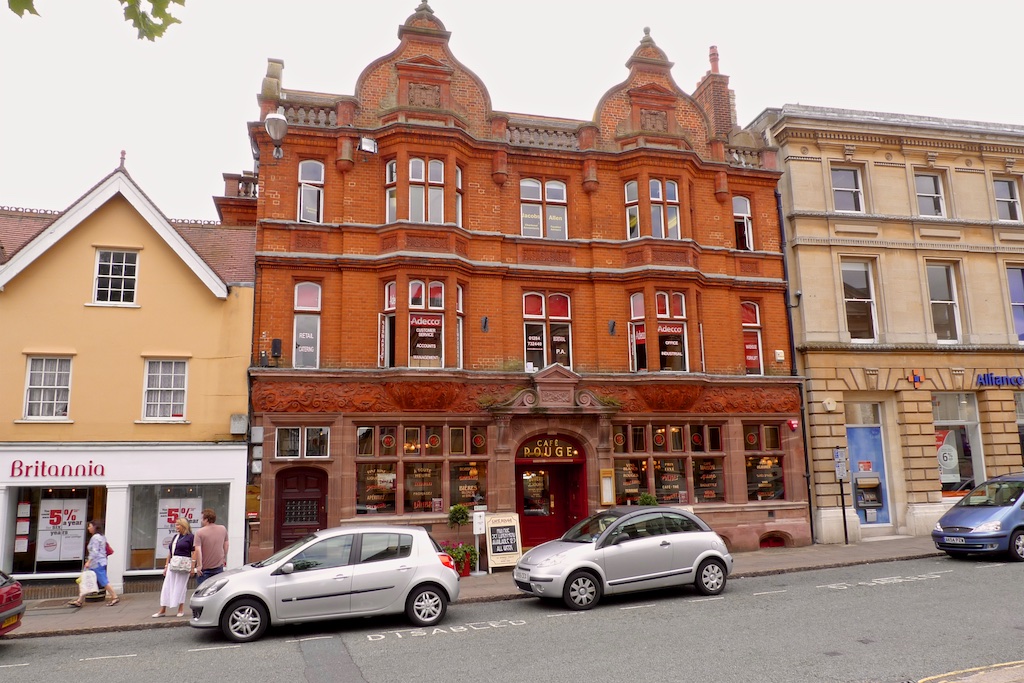
Hatter St doorways:
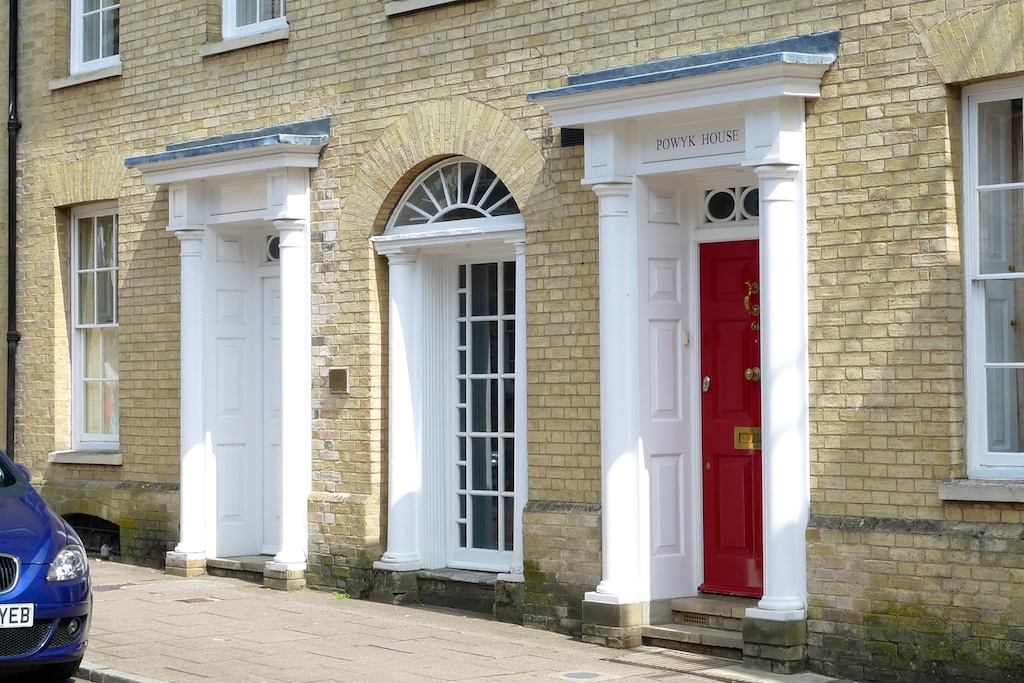
35 Churchgate St:
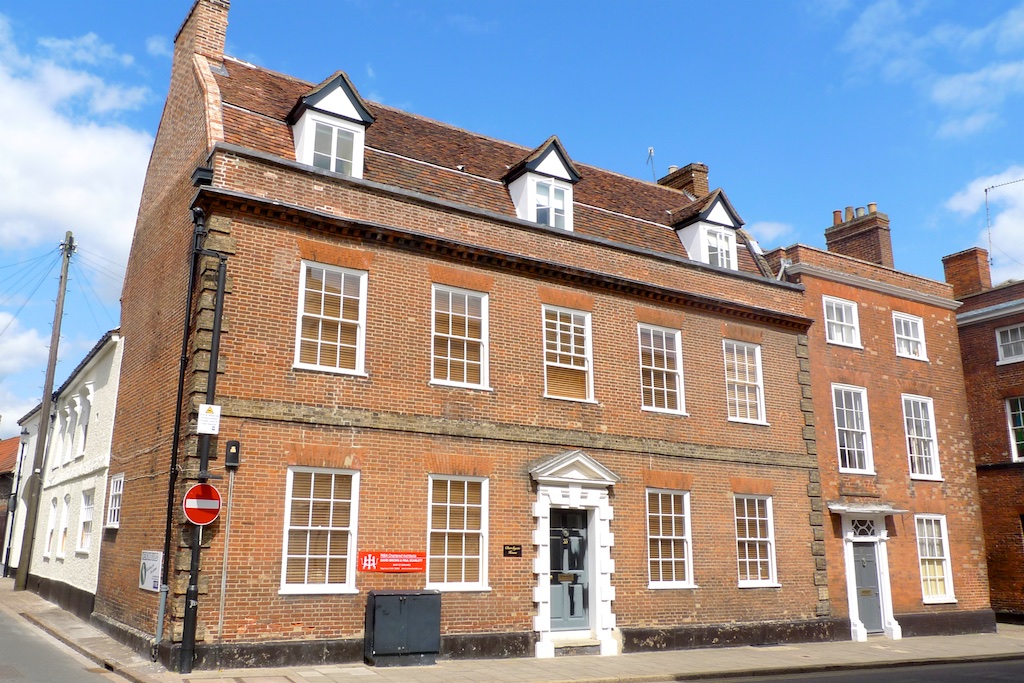
"Cupola House built for the wealthy apothecary Thomas Macro in 1693 and described by Celia Fiennes in 1698. It is three-storeyed, of five bays, plastered and with qoins. Pitched roof and on it the cupola or belvedere, a fashionable feature in the second half of the C17". This was taken in 2009. there was a major fire in 2012. It was restored by 2017. Listing particulars here.
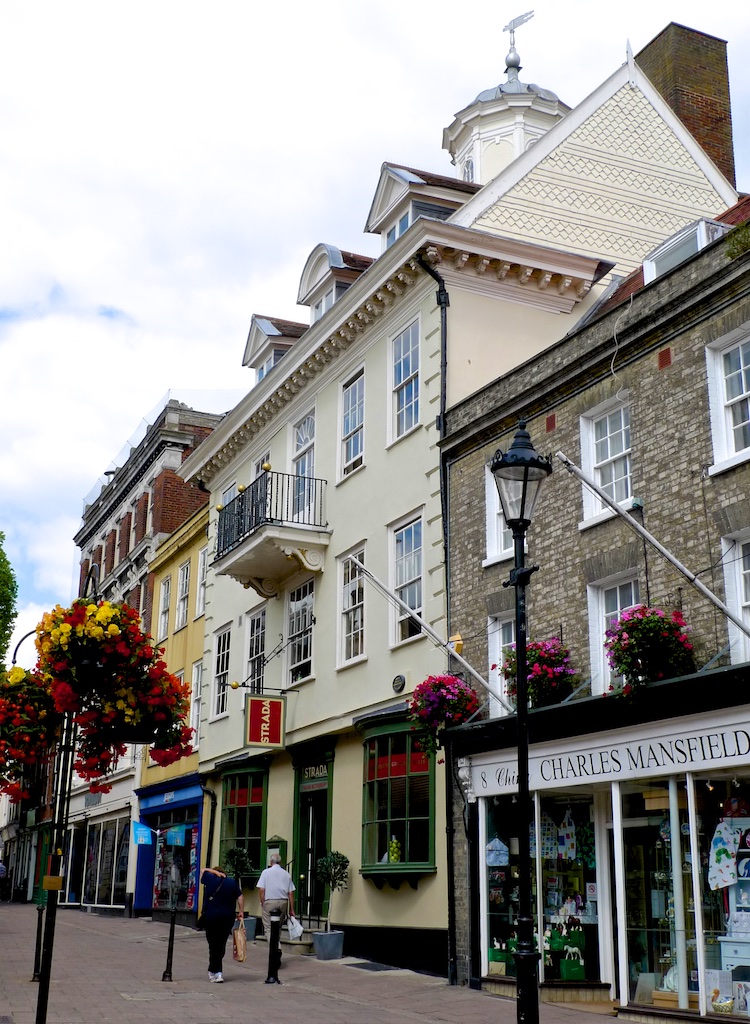
38 Churchgate St:
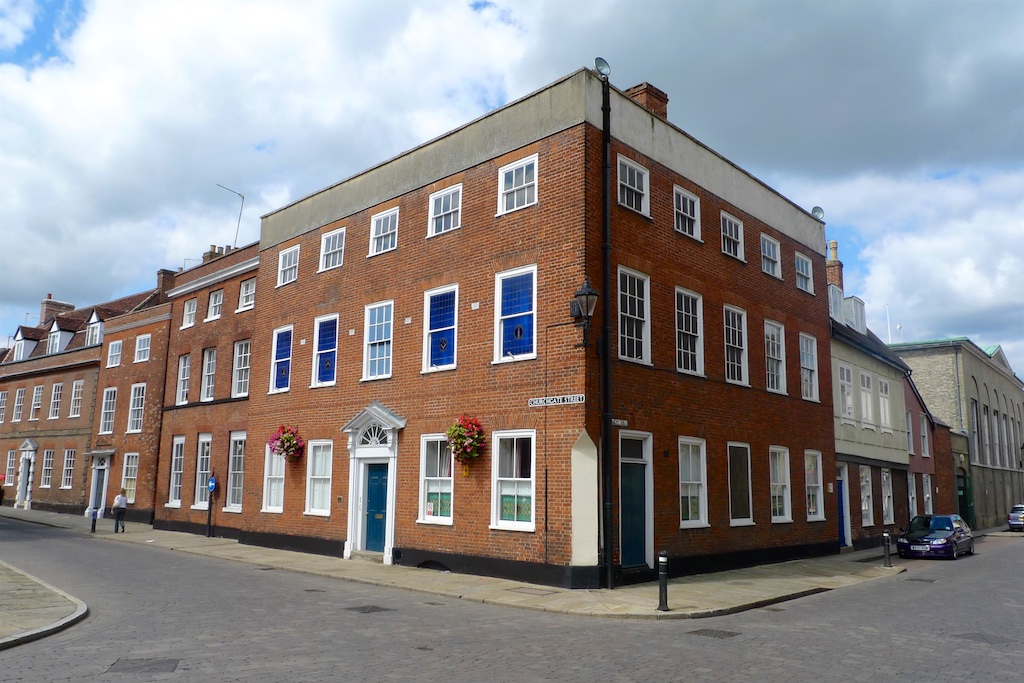
Door of 38:
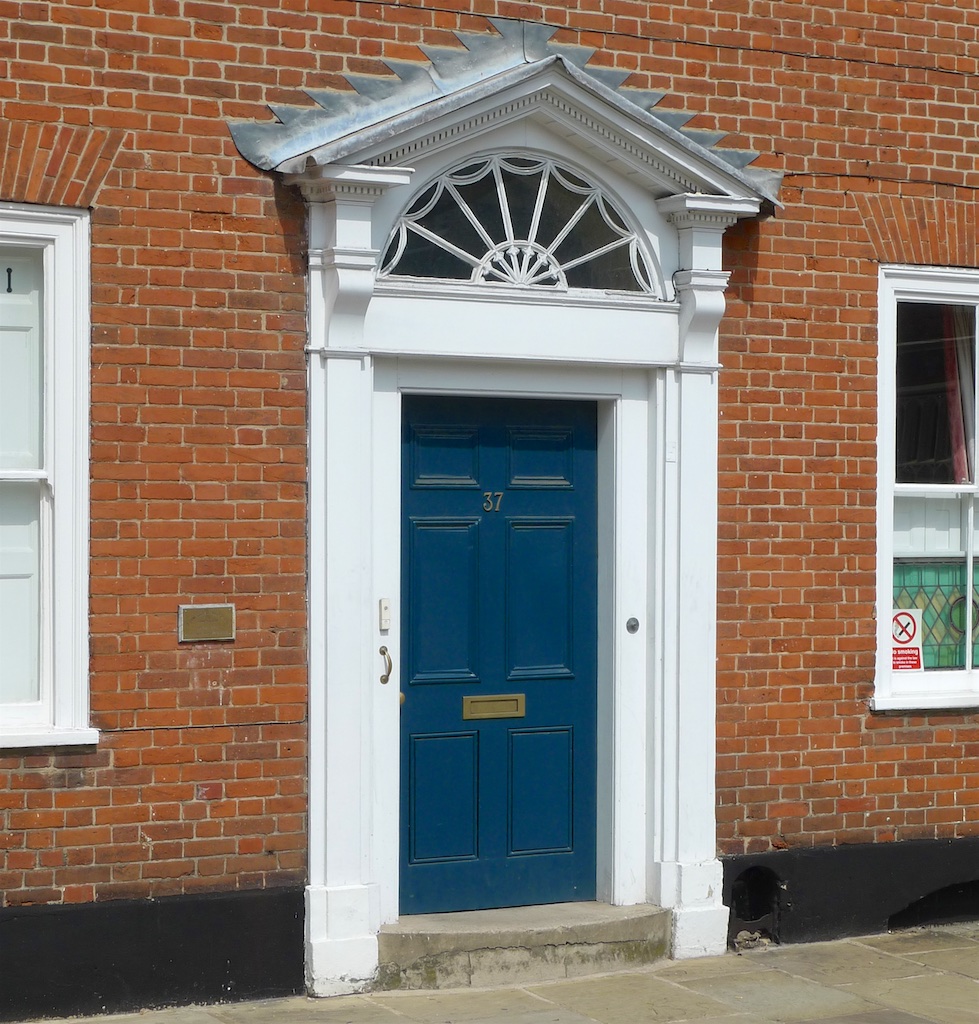
Former Penny Bank:
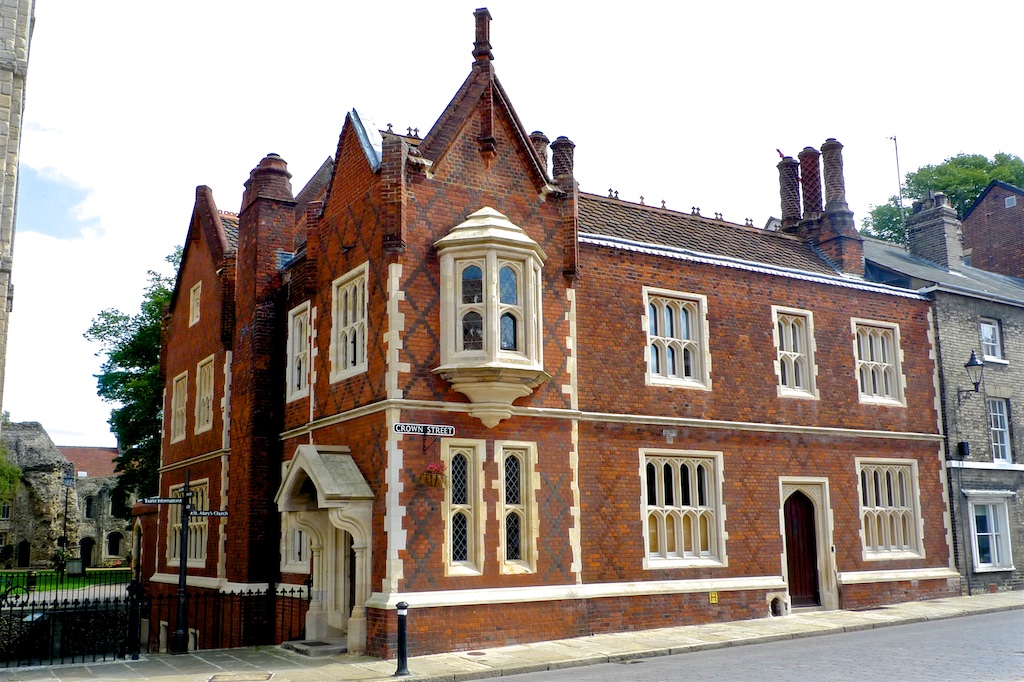
Chequer House:
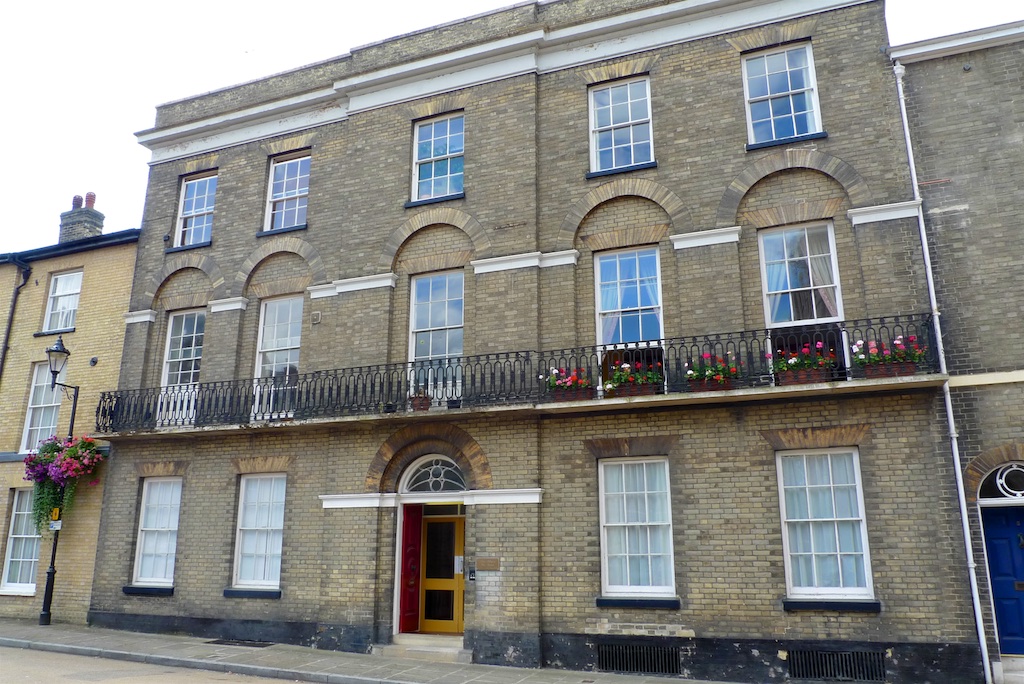
44 Crown St:
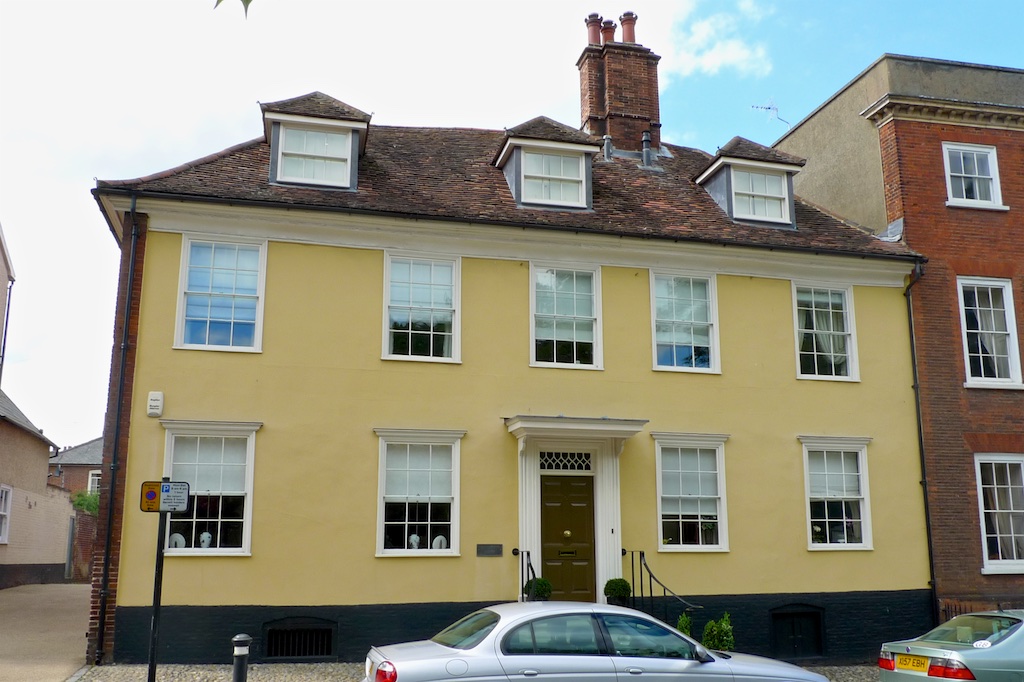
49 Crown St:
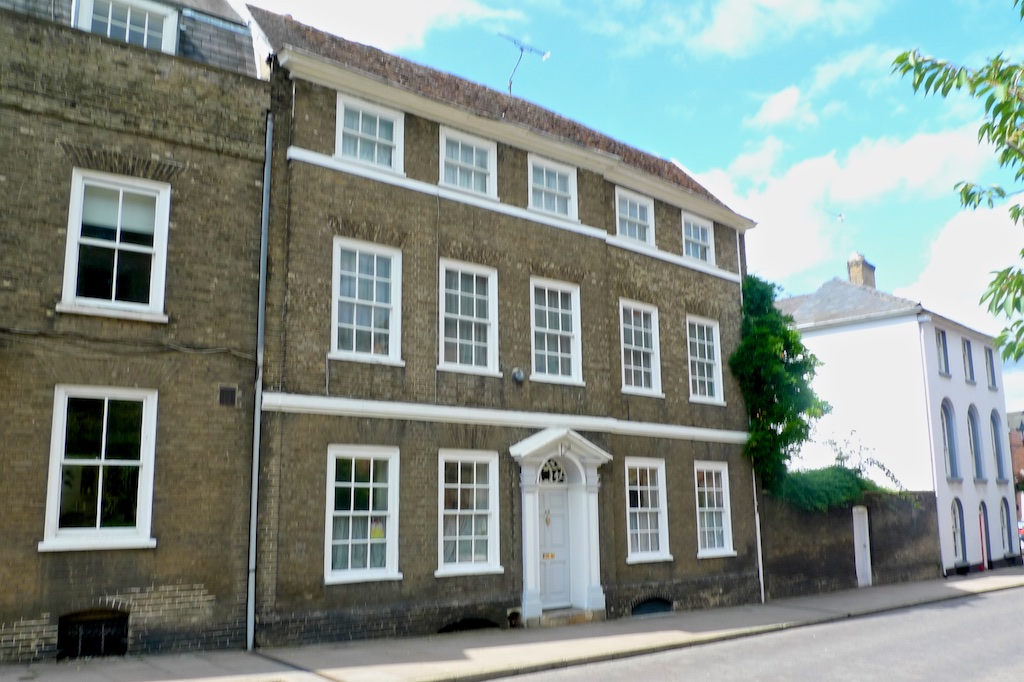
10 Crown St:
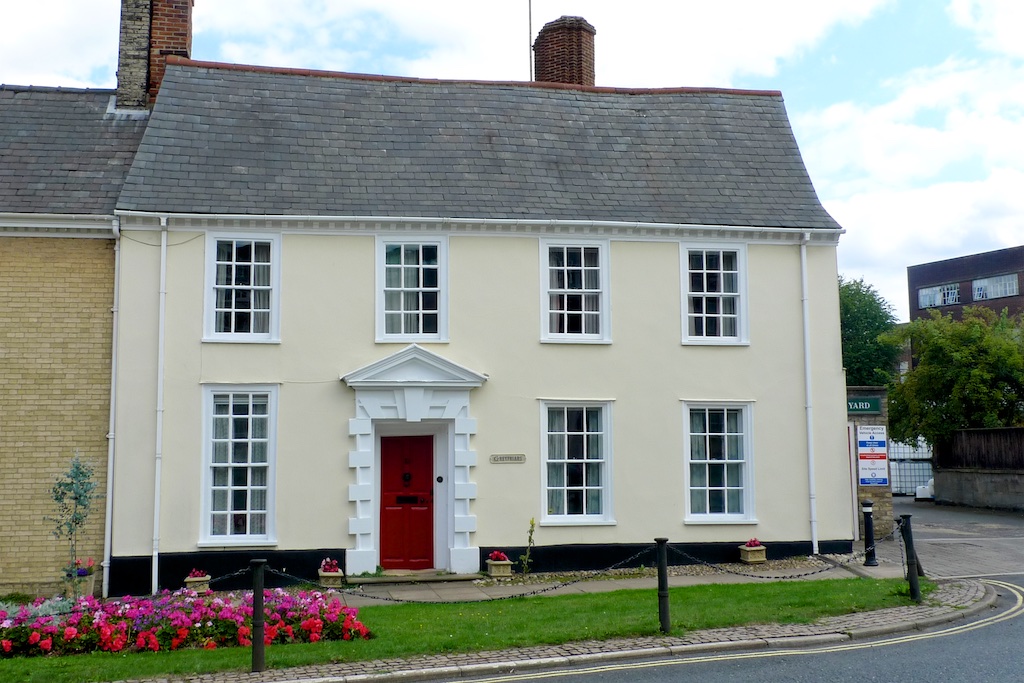
45 Crown St:
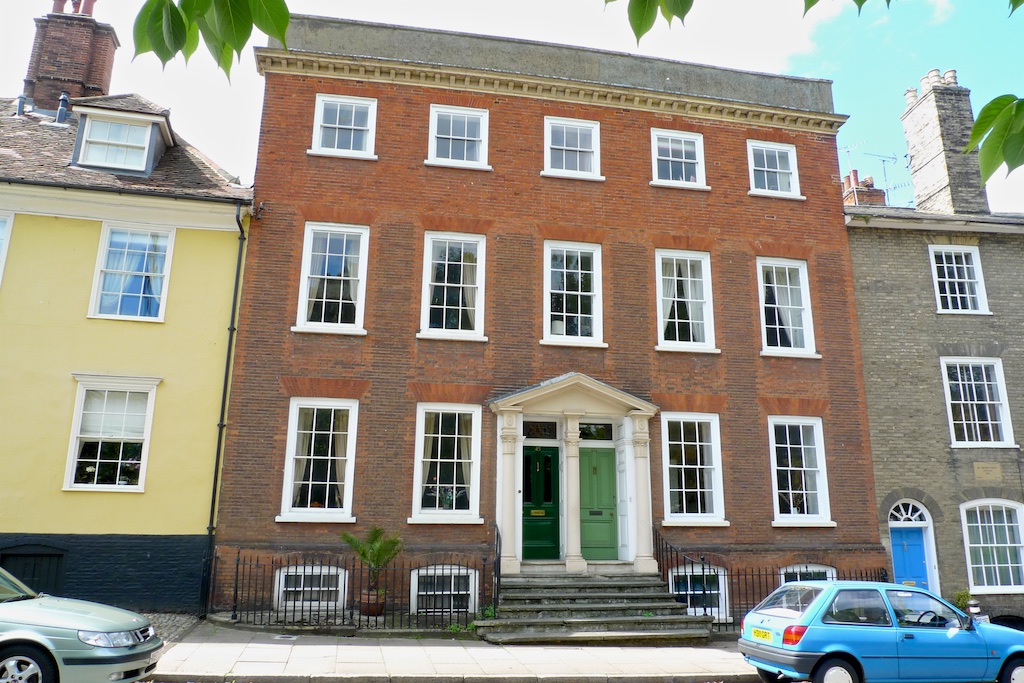
Dog & Partridge:
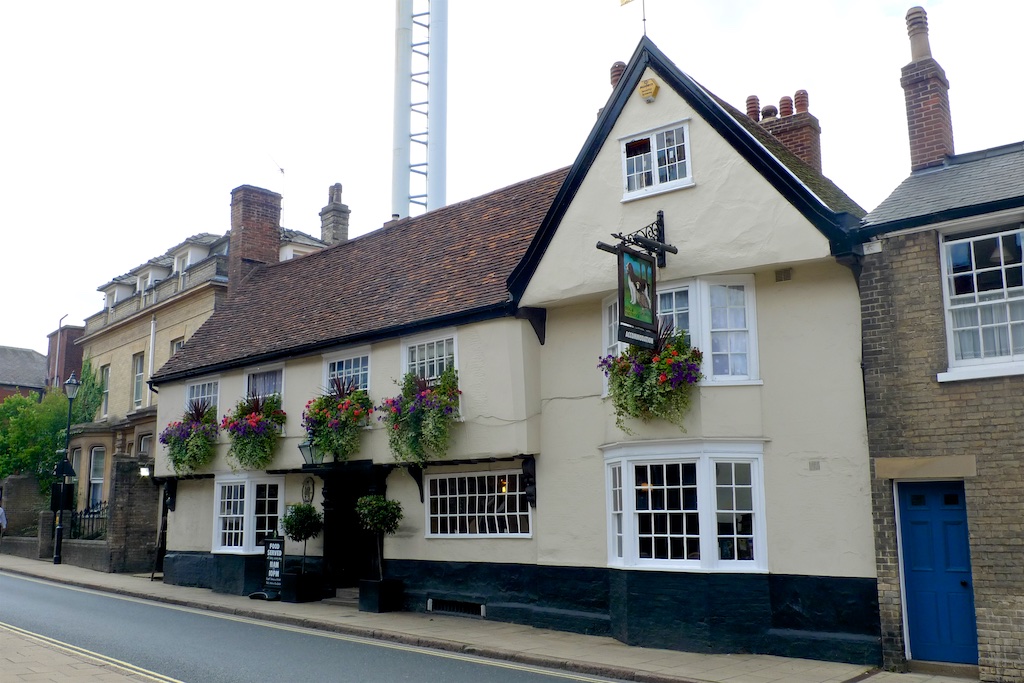
Theatre Royal (p151):

Barnaby Almshouses:
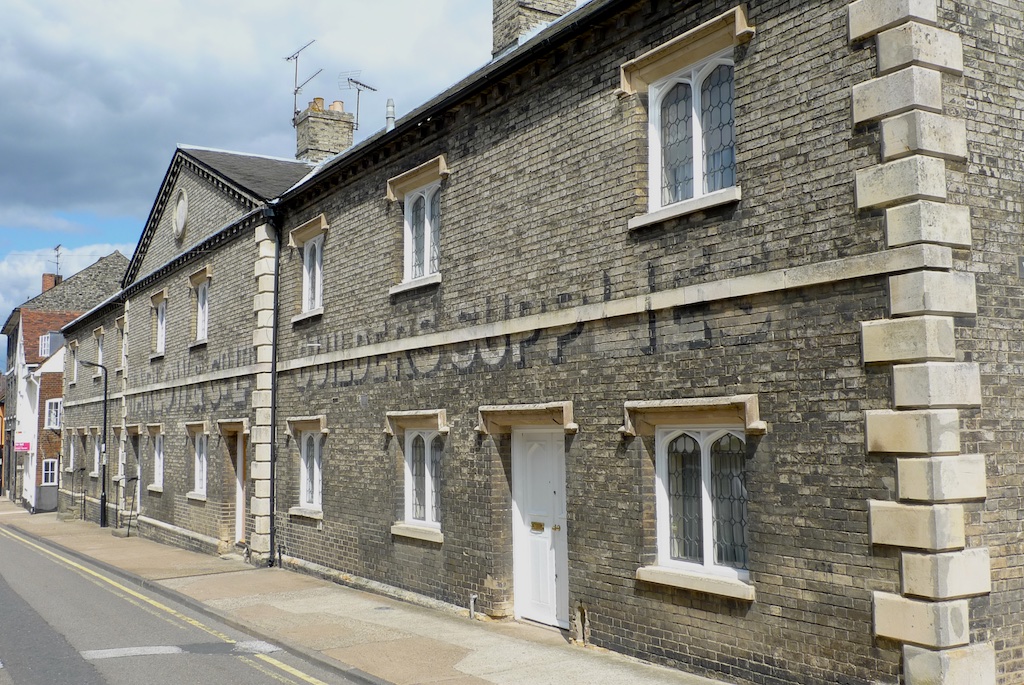
The next few are in Guildhall St:
The Guildhall:

Guildhall detail:
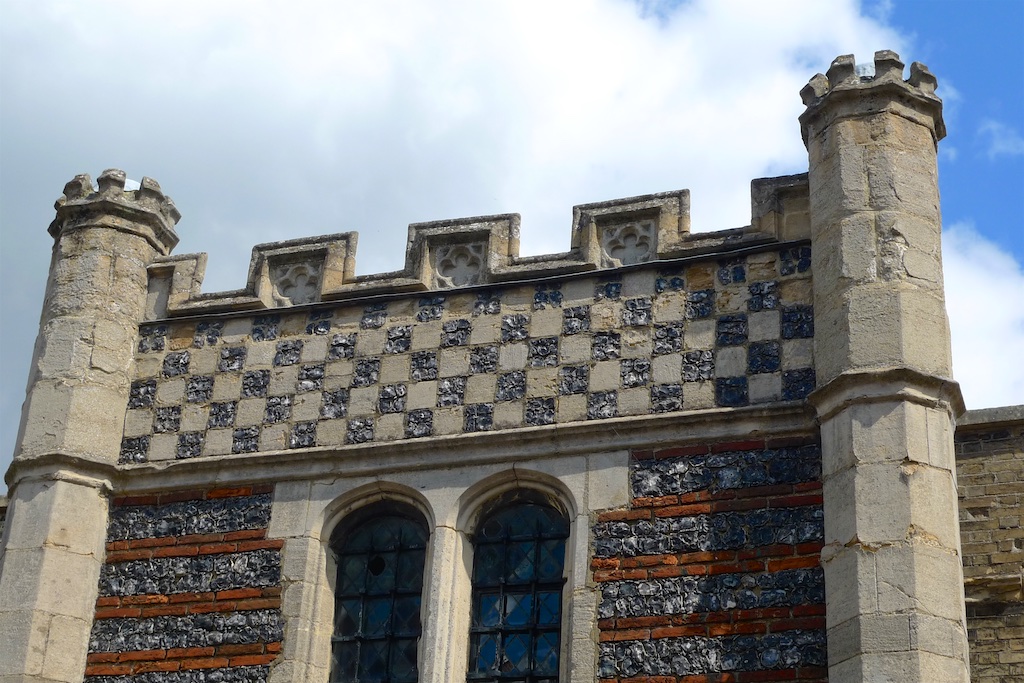
For more details about this guildhall and about gilds and gildhalls in general, see suffolkguildhalls.com
Then some other buildings:
Then some other buildings:
66-67:

No 74:
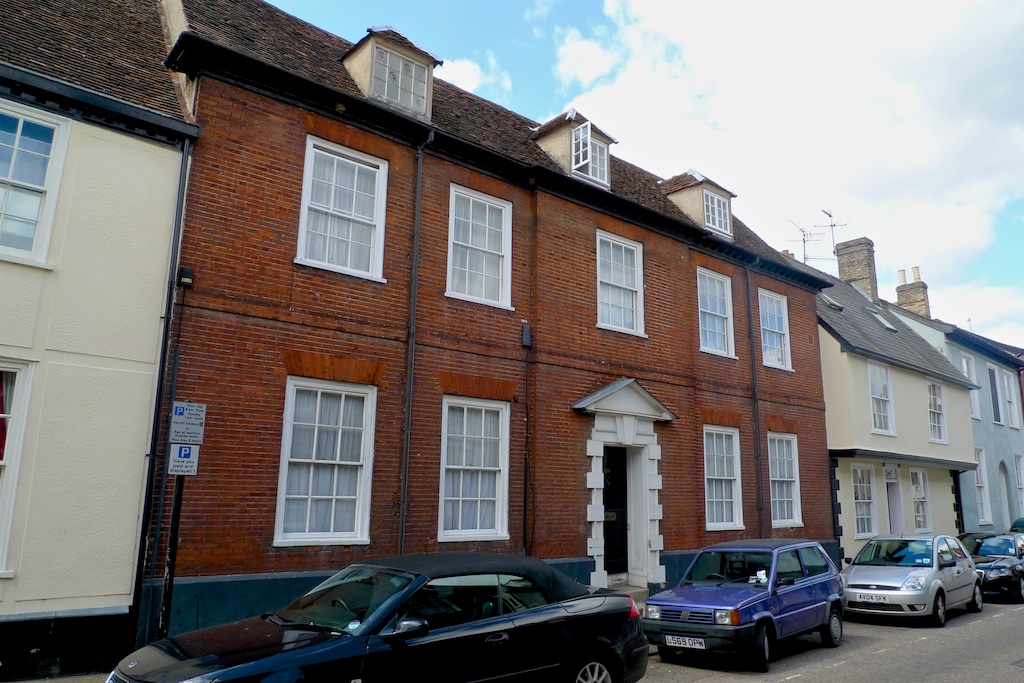
No 70:
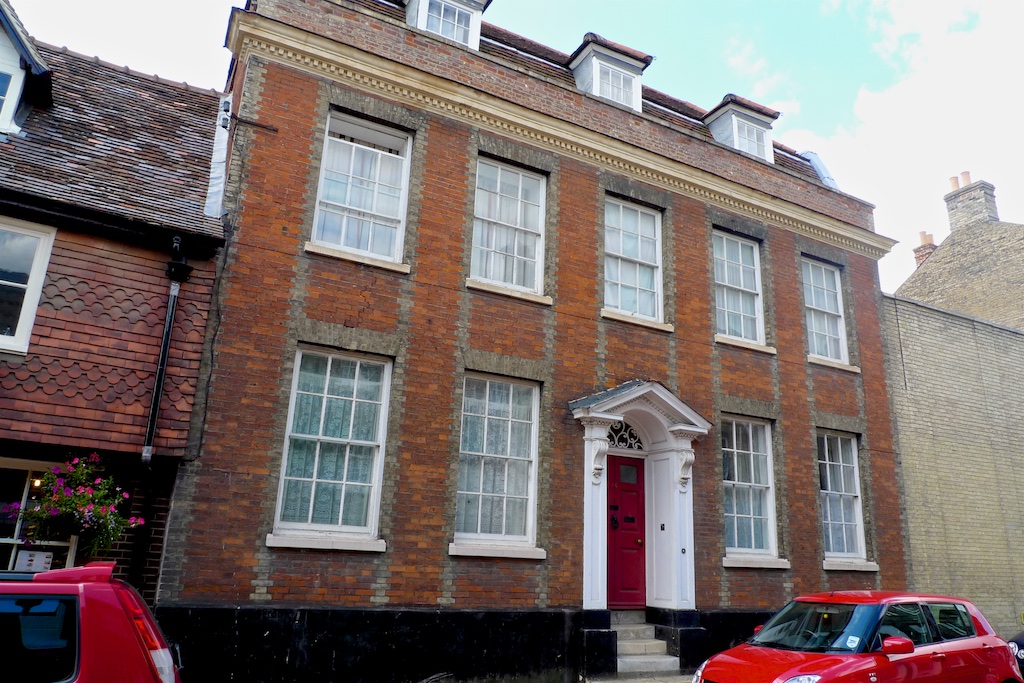
Nos 81-83:
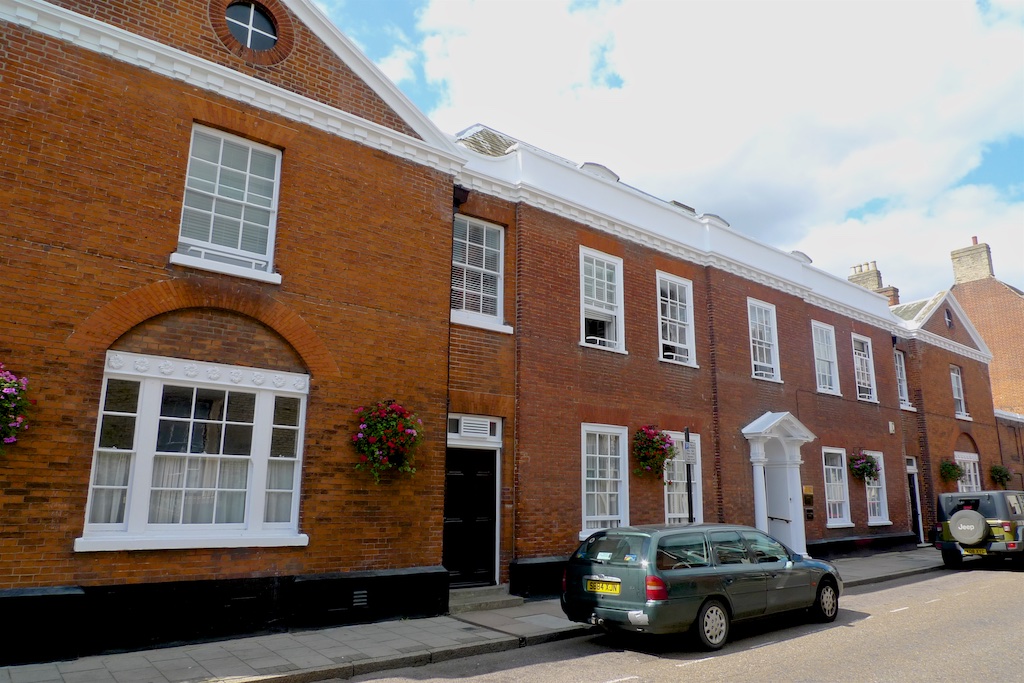
On to Moyse's Hall of which Pevsner says: "the oldest domestic building of Bury, Norman, of two storeys, with a C19 E wall". Also: "The drastic restoration responsible for several obvious solecisms took place in 1858". Here are two views:
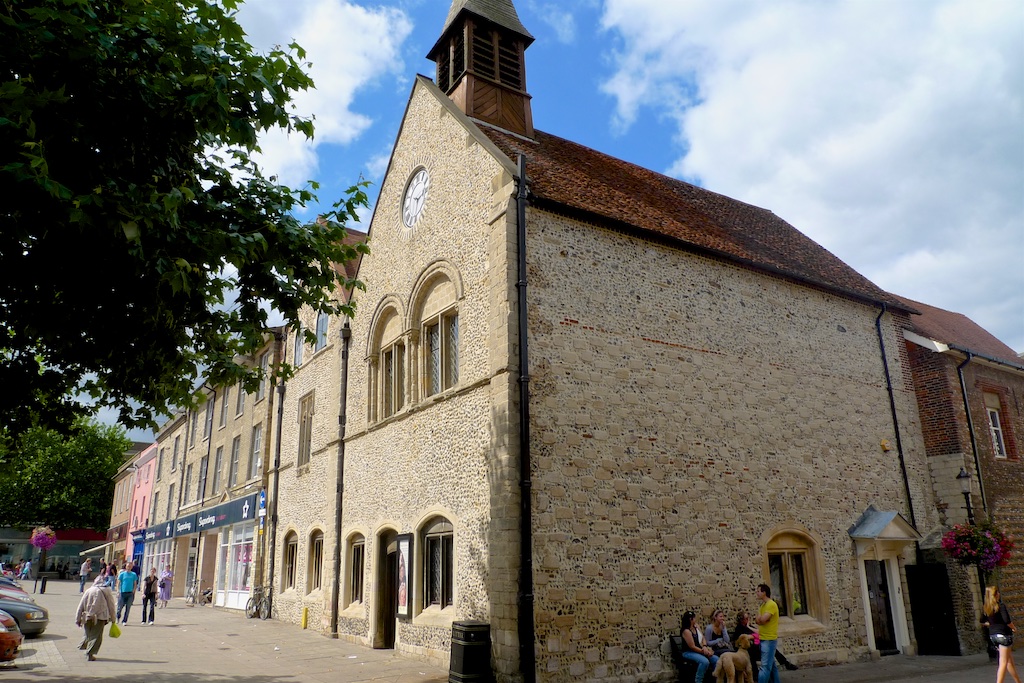

The Corn Exchange (p146):
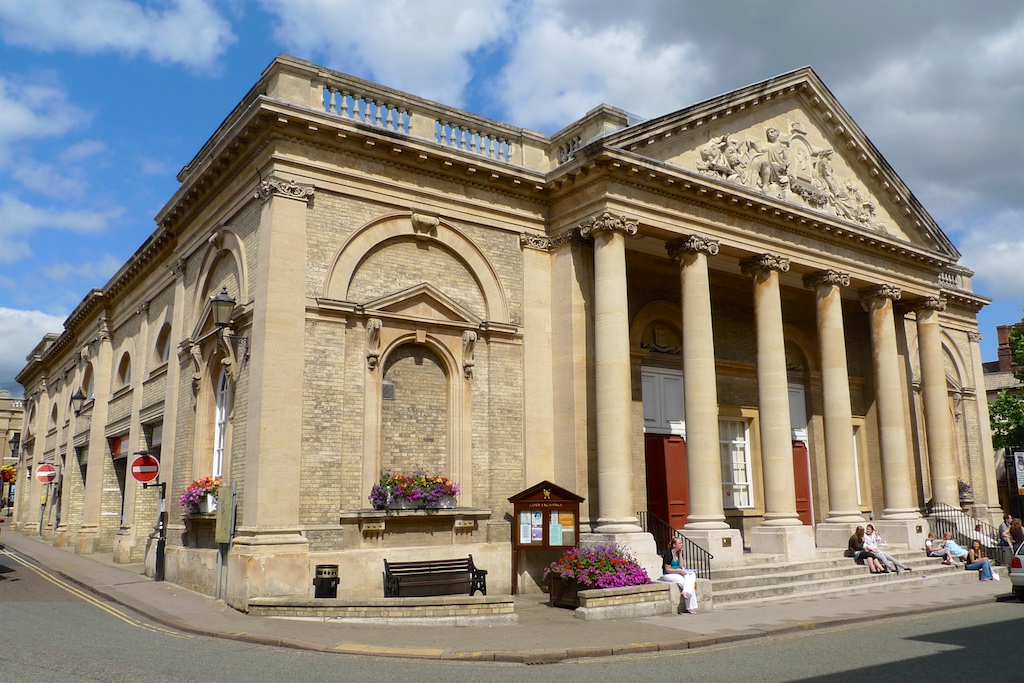
Two views of the Town Hall (or Market Cross), p146:
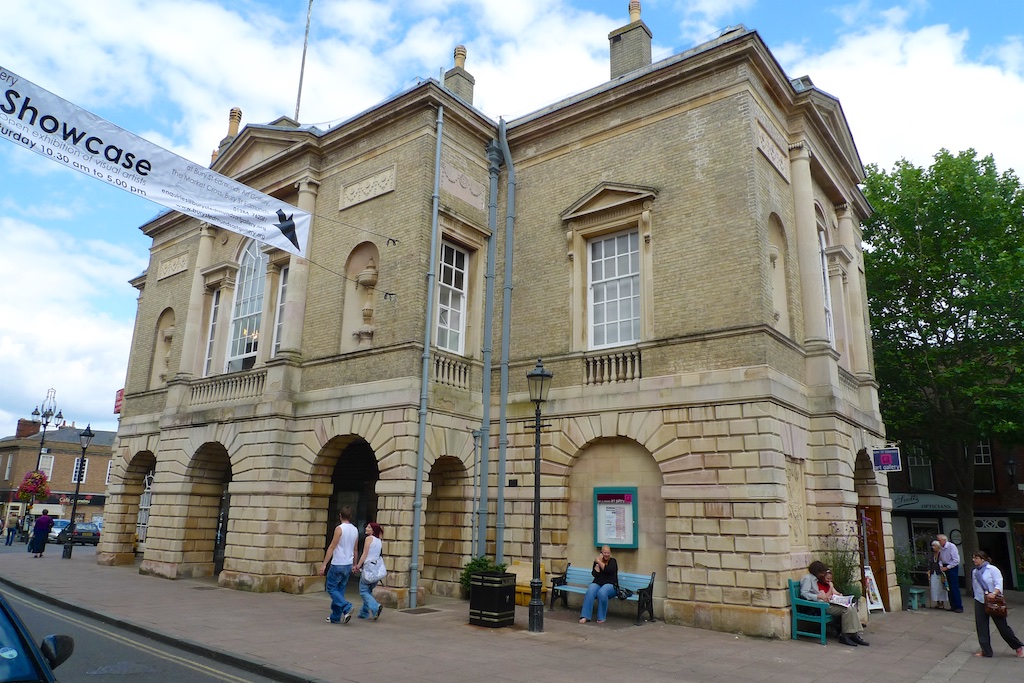

And to conclude, the Friends' Meeting House (p146):
